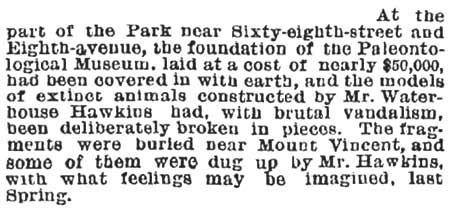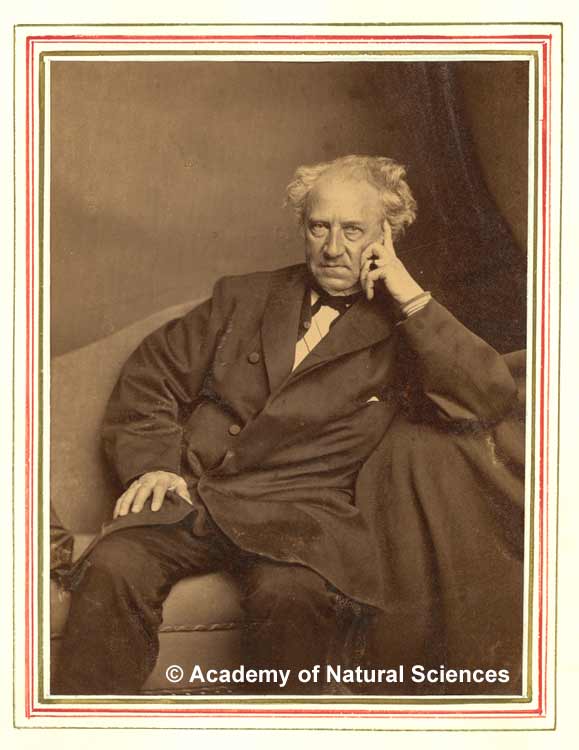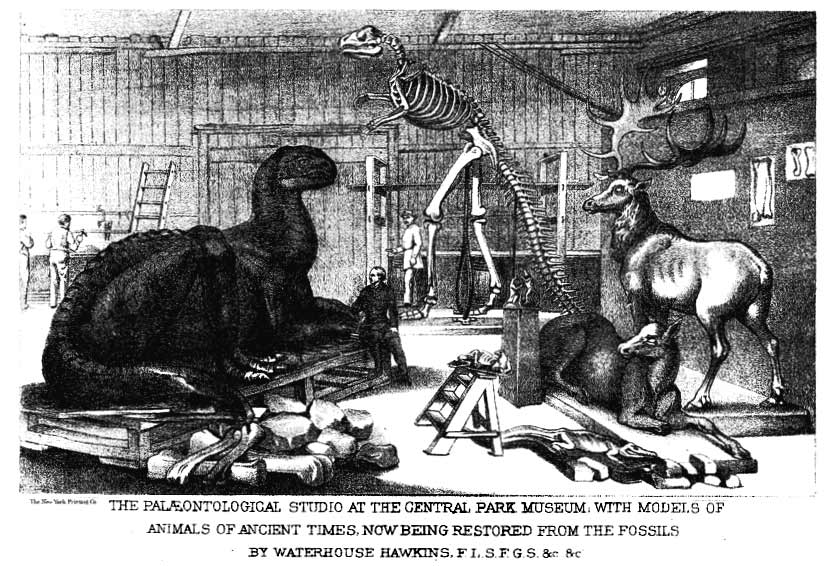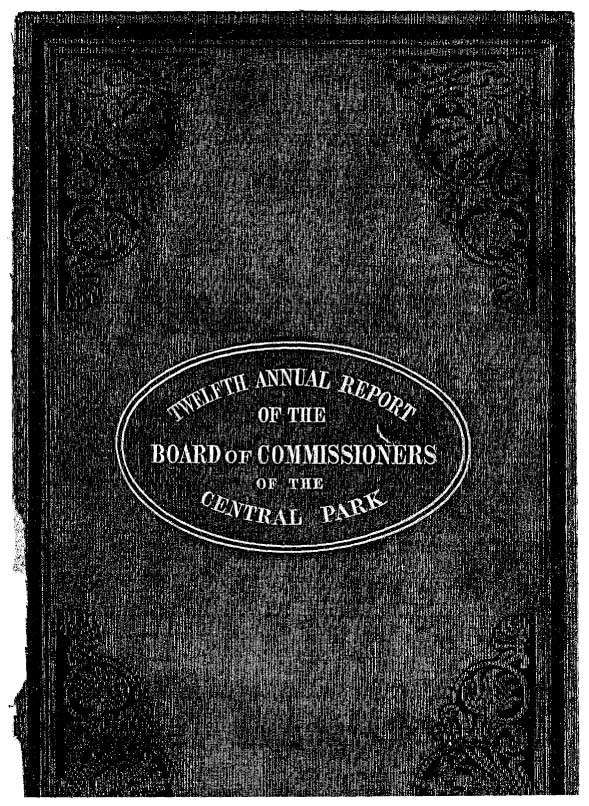

January 7, 2009
To accompany our December-January story on the pioneering paleoartist Benjamin Waterhouse Hawkins, the following letters and newspaper reports document the rise and fall of the great prehistoric beasts of Central Park—genteel behemoths rent limb from limb by a more bloodthirsty breed, graftivorous politicians.
Park Comptroller Andrew H. Green originally approached the freshly arrived Hawkins in 1868. While that link will give you the colorful background of the growing, brawling city, this one is the original, flowery correspondence [PDF] between Green and Hawkins as they did a stately dance of compliments and negotiations. “This improved method of bringing before us creatures of a past age is chiefly due to your skill and scientific labors,” flattered Green. Hawkins, in turn, eagerly anticipated appealing to “that higher condition of popular intelligence for which this country is pre-eminently distinguished.”
In February 1869, Hawkins wrote in a progress report to the park commissioners [PDF] that he had encountered significant obstacles but also made dogged and exciting headway. He had had to move to Philadelphia to study the unrivaled fossil collection of that city’s Academy of Natural Sciences. His own description of how he made the complete mount of the Academy’s rare Hadrosaurus skeleton, “moulding every individual fragment . . . without the slightest injury to the specimens, or any mark of any kind being left on their surface,” is particularly fascinating.
By early 1871, William M. “Boss” Tweed and the corrupt but populist Tammany Hall machine had taken control of the park project, scorning its high-toned educational and cultural objectives. As the New York Times reported on March 7, Hawkins was dejected, telling a meeting of the Lyceum of Natural History that “For a long time he [had] labored under great difficulties . . . and in December last he received a notice from the Commissioners that his services would be discontinued,” he hoped only temporarily. An obvious Boss Tweed plant at the meeting scoffed at Hawkins as “only an Englishman, anyway.” The whole sad and comic confrontation—not unlike certain recent scientist-politician showdowns—is in the original New York Times article [PDF].
Read about how the Tammany Hall Ring trashed Central Park [PDF], that masterwork in progress, in The New York Times of November 25, 1872. This excerpt records the final fate of Waterhouse Hawkins’s painstaking labors:
 
Bonus Links: More fossil people—that is, key figures in the history of paleontology:
- Mary Anning “lived through a life of privation and hardship to become what one source called ‘the greatest fossilist the world ever knew.’ . . . Only her personal qualities and her long experience brought her any recognition at all, since she was a woman, of a lower social class, and from a provincial area at a time when upper-class London men, gentlemanly scholars, received the bulk of the credit for geological discoveries.”
- Richard Owen, Benjamin Waterhouse Hawkins’s mentor, coined the term “dinosaur,” founded London’s Natural History museum—and was apparently a thoroughly obnoxious man.



(Annie Gottlieb) |
Comments (add yours!)

Return to facTotem home
|




